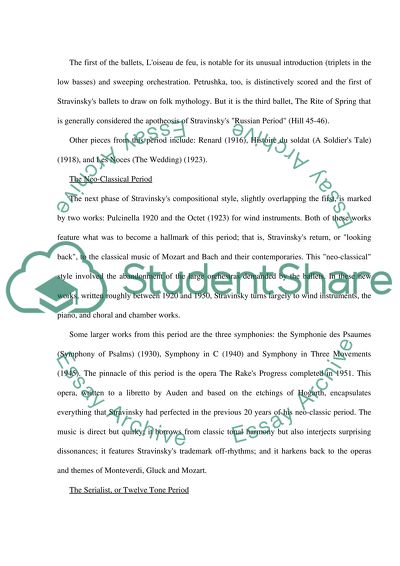Cite this document
(“Igor Stravinsky Essay Example | Topics and Well Written Essays - 1250 words”, n.d.)
Retrieved from https://studentshare.org/performing-arts/1515596-igor-stravinsky
Retrieved from https://studentshare.org/performing-arts/1515596-igor-stravinsky
(Igor Stravinsky Essay Example | Topics and Well Written Essays - 1250 Words)
https://studentshare.org/performing-arts/1515596-igor-stravinsky.
https://studentshare.org/performing-arts/1515596-igor-stravinsky.
“Igor Stravinsky Essay Example | Topics and Well Written Essays - 1250 Words”, n.d. https://studentshare.org/performing-arts/1515596-igor-stravinsky.


